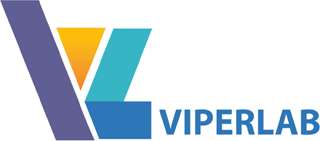- Home >
- Organizations >
- TNO

TNO at a glance
TNO (Nederlandse Organisatie voor toegepast-natuurwetenschappelijk Onderzoek TNO) is one of the major contract research organisations in Europe. With a staff of approximately 2800 and an annual turnover of 430 million Euros, TNO is carrying out research in order to achieve impact on the following seven themes: Healthy Living, Industrial Innovation, Transport and Mobility, Energy Transition, Built Environment, Information Society, and Defence, Safety and Security.
TNO functions as an intermediary between basic research organisations and industry. By translating scientific knowledge into practical applications, TNO contributes to the innovation capacity of businesses and government. TNO is involved in many international projects (about 30% of the market turnover), including EU-funded collaborations.
The TNO department of Solar Technologies and Application (STA), which participates in the Solliance collaboration (www.solliance.eu and is one of the founding fathers of EPKI, provides access to its infrastructure in this project. As partner in Solliance, the TNO-STA department works together with the business community and academic partners in research programs. The main goal is to develop production processes and systems until they can be scaled up to an economically viable level. The research focuses on processing of new material compositions for the absorber and the supporting device layers, specifically on innovative semi-transparent and translucent designs, e.g. for PV windows, PV sound barriers, BIPV, and (hybrid) tandem devices to boost the efficiency of existing PV products. Besides efficiency, device lifetime and the development of industrially scalable methods for manufacturing perovskite solar modules are central themes of the research program. Concerning perovskite process development, the STA group specifically focuses its research on solution-based, atmospheric processing of perovskite solar modules and applies cost calculations as one of the main guiding tools to direct its research portfolio
Main role and tasks in the project
- TNO will take the lead of the WP8-JRA2
- TNO will provide access to their state-of-the-art perovskite module processing infrastructure that enables the manufacture of perovskite module on an area up to 6-inch square.
TNO will contribute to WP10 with their expertise of LCOE calculation. For past years TNO has establish a large up-to-date database for calculating LCOE of various types of thin-film PV devices
Links
Infrastructures
- Sheet-to-sheet process line for perovskite solar cells and modules (6x6 inch2) based on industrial compatible processes (slot die, xALD, sputter, laser interconnect, encapsulation
- The infrastructure can be used to manufacture rigid, flexible and opaque or semi-transparent (or translucent) modules
Expertise
VIPERLAB Main contact

Webinars
[1] - Took place on Nov, 13th 2023
Perovskite SJ and Pero/Si Tandem technologies are attracting significant attention from both the scientific and industrial communities thanks to the rapid increases of the conversion efficiency, Several efforts are put on the ground to chracterize the technological bottlenecks, overcome them and to push the technology toward the commercial world through the photovoltaic module upscale. Today we present the TNO-Solliance - S25 Process PSK Line and Swansea University - PV manufacturing and Testing Facilities Research Infrastructure offers state-of-the-art fabrication and characterisation equipment for the printing and testing of solar cells and PV module devices
Publications
Jonathan Henzel, Klaas Bakker, Mehrdad Najafi, Valerio Zardetto, Sjoerd Veenstra, Olindo Isabella, Luana Mazzarella, Arthur Weeber, Mirjam Theelen








